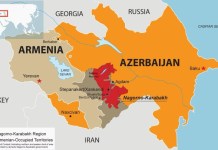OPED by Lt Gen. PR Shankar (Retired)
There is a lot of chatter about China’s economic woes. Everyone has a view of what has gone wrong with the Chinese economy. Most of these analysts were in the chorus cheering China’s 100-year marathon towards global domination.
China’s J-20 Stealth Fighter, Flying Under AWACS Cover, Very Dangerous; Best Avoided By India’s Rafale: OPED
These very honchos are now prescribing what China must do to once again fire on all cylinders and regain its mojo. However, very few analyze or put down a recovery timeline. In most cases, China is analyzed piecemeal and never holistically. The hidden reality staring at us is that China’s much-touted comprehensive power will not recover. This is something that no one wants to acknowledge.
For the past three years or more, I have been writing that China’s decline is inevitable. Many felt I was xenophobic and could not share my certitude about China. Well, that does not matter. The issue is where does China go from here? Will it recover? If it does not, what lies ahead?
These are not million-dollar questions if basic logic is applied to China and the bluster and hype of communist propaganda are eliminated. The Chinese are not from the planet of apes, despite their complex behavior patterns or trendlines. We can decipher them. So here comes my logic on the deflation and decline of China’s Comprehensive National Power based on some macro factors.
Demography
A nation is made of people. Hence, demography is primal in the future of China. The Deng era’s bequeathment of the ‘One Child Policy’ consigned China to an irrecoverable demographic decline.
The mathematical certainty of the decline objectively establishes that the Chinese population is dwindling with abysmal birth rates of 1.06, losing the working age population and aging at the fastest pace in human history.
As time passes, China might not have enough young working hands to produce the grains in its farmlands or cost-effective goods in its factories. This is easily derived from the UN population graph by broad age groups.
The graph duly transposed in various periods is also tabulated. An analysis of this table is illuminative. Till 2030, there might not be any significant negative demographic effect. However, the prosperity of the past few decades has driven up people’s expectations and wrought societal changes.
The Chinese political economy cannot cater to this aspirational change in its increasingly aging society or the apprehensions of its middle-aged people who are the workers, managers, and businesspeople.
Further, it cannot even employ its educated youth. This is evident in numerous articles and underscored by how China suppresses data. The real problem with China’s demography is its numbers.
Those in the 65+ age group will increase by approximately 13.4% to 17.8%. Alarmingly, 1/4th of the population will be in the 60+ age group, rising from 18% to 23%. The scary data shows up in the decade 2030-2040, when the total population will decrease progressively by about 55 million as the working population reduces by approximately 120 million (12%) and the dependency ratio increases from 1: 2.26 to 1:1.71.
There will be fewer than two people to look after each dependent (young or old) in the country! The 65+ age group in this period increased from 17.8% to 26.5 %. Interestingly, if one considers the 60+ as aged, 1/3rd of China’s population (31%) will be aged.
Overall, we will witness the vitality of the billion-plus Chinese people being sapped steadily. They will become surly with no way to turn the clock back as it ticks on remorselessly. It is not an uncertain but a bleak future as the PRC does not have the tools to cope with this change. In comparison, ‘Japanification’ will be a boon.
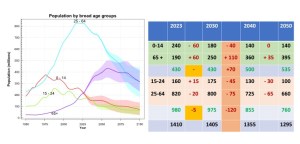
Ideology
Communist ideology has been the bedrock of the PRC since 1949. The radicalism of the Mao era gave way to three decades of capitalistic/market-oriented versions of Socialism propagated by Deng Xiaoping and practiced by his successors Jiang Zemin and Hu Jintao.
This was when privatization was encouraged, and China logged in astronomical growth rates. However, with such growth came the problem of loss of control and the hint of loss of power. That was unacceptable to the CCP patriarchy.
Accordingly, Xi Jinping was charged by CCP elders to restore the party’s primacy. Xi, the ideological hardliner, has emphasized state control and totalitarian power residing indisputably with the CCP. In the past ten years, he has reversed course.
China is now under the absolute control of the CCP, conflated with his increasing authority. Any reform to open the society or the markets has been rudely bludgeoned. Xi Jinping has increasingly centralized power and management.
His rule is punctuated with constant purges striking at every section of the society and state. These have eradicated all alternate centers of power. All state organs are injected with party cadres loyal to Xi Jinping.
For the past year and more, it has become evident that the latter is supreme between economy and political power. Further, the increasing importance of security and related laws enacted by Xi Jinping indicate that consolidation of power will continue irrespective of the economic outcomes.
In this context, a fundamental precept is essential to recount. Fundamentally, Communism is the antithesis of Capitalism. There is no case in history where a Communist system of government has succeeded economically.
Also, Communism is more about the retention of power rather than the welfare of the people. This has been proven repeatedly in Russia, China (under Mao), North Korea, Cuba, and Venezuela, where dreams are sold to retain power.
Until Xi Jinping remains in power, this condition is unlikely to change. The leadership is willing to sacrifice economic growth for the sake of ideology. To round it off, it was widely believed that the Chinese, having shed their ideological moorings, were winning the war on global dominance without fighting in the best traditions of Sun Tsu.
These days, the beleaguered Chinese are losing the war without fighting! The more one looks at it, the Chinese model resembles the Soviet one, which collapsed without a trace overnight.
Structural Issues
China’s economic strategy has historically over-relied on real estate, infrastructure, high local debt, inefficient state-owned enterprises, lower-end manufacturing, and domestic consumer internet platforms on one end. On the other end, its export-driven model made China the world’s manufacturing hub.
The low-hanging fruit of this policy is no longer available as unprecedented geopolitical, security, ideological, and demographic changes are taking place. By almost all accounts, China has to shift to a consumption-driven model to come out of this slowdown.
A recent analysis by Michael Pettis, who I consider on the spot on China, reasons that China must slow down investment if it wants to rebalance its debt-laden economy. It has the choice to suffer the pain of lower GDP growth or encourage consumption to drive demand and suffer the pain of a disruptive transformation of the country’s development model.
Pain is inherent both ways! The huge gap between low consumption and high investment in the Chinese economic model is unique and diametrically opposite to that of the rest of the developed/developing world.
The common wisdom from experts across all countries is that about 2/3rds of China’s investment is in property and infrastructure. Both have become wasteful and non-productive since China has more houses than it needs for the next seven years, and large parts of its infrastructure are vastly underutilized.
However, the Chinese do not seem to think so. The chief economist at BOC International, Bank of China, writing in China Daily, opines that better ‘income distribution’ can create demand and drive consumption. The failed ‘common prosperity’ model is being couched as ‘income distribution.’
He also acknowledges that this option is difficult to achieve. Hence, as per him, under the circumstances, China should stabilize growth by stimulating investment, especially infrastructure and real estate investments. Further, the Chinese still hope to revive and maximize exports.
The more things change, the more they remain the same! Many things are apparent. The Chinese are not convinced — politically or economically — that they need a vastly different model. Resultantly, there is no plan to change tracks.
Even if they change paths and go through the pain of transformation, it will be anything from 5-10 years before results are seen. Very clearly, the old model is failing, and the Chinese seem to have no other plan but to reinforce it! To my simple military mind, any general who supports failure will generate defeat. I leave it to the readers to draw their conclusions.
Geopolitics
Before the onset of the COVID-19 pandemic, the world was all set to welcome or grudgingly accept China as the next superpower. It appeared to have arrived. However, during the COVID pandemic, its ‘wolf warrior’ behavior built distrust and posited a global threat.
It suppressed COVID-related information, which would have saved the world a lot of misery. Its military assertion to usurp territories in Eastern Ladakh, the South China Sea, and Hong Kong violated international norms, rules, and treaties.
Its repeated missile drills and enhanced naval and air activity in the Taiwan Straits as a precursor to annexing Taiwan posed a military threat to all nations of the Western Pacific. Reflexively, all these nations are antagonistic to China.
Further, high-profile militarization to support the ‘Rejuvenation of the China Dream’ and its surreptitious Global Initiatives about security, development, communication, and civilization to establish a Sino-centric world order threatens to upset the set global governance architecture.
Its unseemly hurry to displace the US from its numero-uno status without concomitant capability is almost coercive. It was also realized that China held the world at ransom with its manufacturing prowess.
This started a decoupling/derisking process through alternate supply chains, which is now irreversible. To top it, the US has put sanctions and a technology denial regime in place, which has long-term implications beyond trade and technology.
Then came the Ukrainian War, in which the West suspects China of supporting Russia through its ‘no-limit friendship.’ As all this happened, China’s flagship BRI became the symbol of its dishonorable debt trap diplomacy.
If this was not enough, China created a new standard map that usurps large swathes of continental and maritime territories of many nations. It has also insisted on showcasing its revisionist authoritarian political model to the rest of the world as a success.
The sum-total is that China’s belligerent attitude has succeeded in generating global antipathy and distrust, which will negatively impact its power in the long run. In the short run, its export-oriented manufacturing economy has already been hit severely with no chance of reversal.
Climate Change
While climate change is a global ‘given’ and will impact all nations, its adverse effect on China will be disproportionately high. Droughts, famine, and floods have been endemic in China. Empires have collapsed due to this reason alone.
Expanding desertification, shrinking of arable land, and water shortages have increased as China has developed. In recent times, food security, or lack of it, has dominated national debate as unpredictable weather has adversely affected crops repeatedly.
Unprecedented floods and droughts in the past few years have exacerbated the damage that China experiences through frequent coastal flooding, storm surges, coastal erosion, and saltwater intrusion. More importantly, climate change casts a dark shadow on China’s energy security.
Globally, China is the most significant energy importer and is at massive risk of energy deficiency if imports are blocked or unavailable. Further, in recent years, its domestic power supply has been hit due to the unprecedented droughts which in turn has impacted China’s economy in multiple ways, including bringing its manufacturing bases to a crawl.
As climate variations have increased and threatened development, China has embarked on high-profile, high-investment, high-risk water transfer infrastructure, which has unknown outcomes besides being environmentally unsustainable.
The Communists who think the Chinese are great engineers, builders, and constructors are proving to be poor visionaries in their blinkered hurry. The net effect of climate change is reflected in a World Bank report, which states that it threatens China’s densely populated and economically critical low-lying coastal cities, home to an estimated one-fifth of China’s population, and contributes a third of its GDP. Unabated climate change could lead to estimated GDP losses of 0.5 and 2.3 percent as early as 2030 (see graph below). I believe Mother Nature will have its final say and trump Xi Jinping’s and China’s unrealistic dreams.
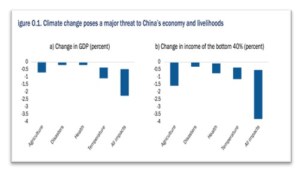
Military
Xi Jinping is betting big on the military to deliver goods to China. PLA is his global enforcer to set a Sino-centric world order and wreak revenge on the century of humiliation. Accordingly, Xi has vowed to build a modern and world-class military in tight timelines.
Massive defense outlays is the norm in China, backed by an ambitious military-civil fusion strategy. As a result, plenty of costly high-tech defense equipment is inducted into the PLA. The commentary from China indicates low quality, lack of standards, and suspicion that Chinese weaponry being ‘battle untested’ might not meet the bill in conflict situations.
Further, the PLA is poorly led and managed, as evinced by the fact that two successive defense ministers have been purged. The top leadership of China’s shiny new PLARF is being purged wholesale, and severe restrictions have been placed on PLA leadership (past and present).
Besides this, many reports have surfaced on the non-availability of pilots, ship captains, and the general level of poor soldiery. The combination of unreliable high-tech military equipment and poor leadership invariably results in low operability, high maintenance costs, reduced operational life cycles, and high replacement costs.
This is compounded by systemic corruption. One must also not forget that the PLA is one of the most significant forces in the world with the least amount of battle experience. It leads to two things. A disproportionate load on the economy will increase with time, and an ineffective force to deal with military/conflict situations. China will not escape this trap that it has set for itself.
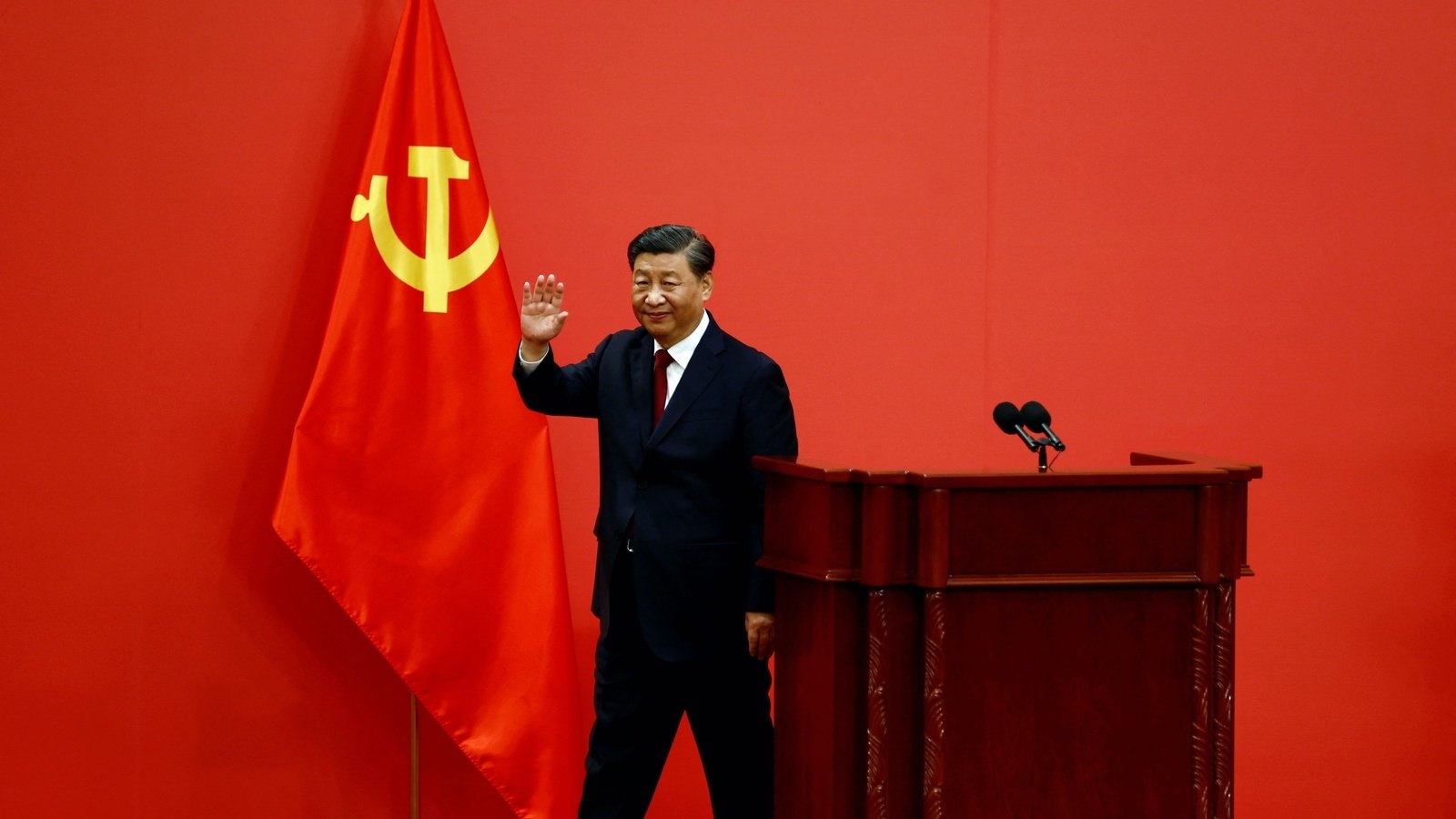
Analysis
Looking closely and rationally, one will realize that all the abovementioned problems are autarkic. China has virtually little or no control over the direction in which these elements of its comprehensive national power are heading in the foreseeable political climate of the PRC.
However, these issues have considerable intersections to compound each other’s decline. In light of their autarkic uncontrollability beyond a point and lack of any indication, politically or otherwise, of reining them in or putting in place course corrections, the chances of any recovery are bleak, if they exist at all.
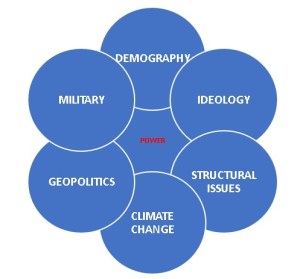
In 2018, I wrote that China was an overstretched hegemon. The economic slowdown had begun, the debt bubble was expanding, and the CPEC/BRI faced a pushback. At that time, I felt Paul Kennedy’s concept of ‘imperial overstretch’ in his classic book – The Rise and Fall of the Great Powers was spot on.
Accordingly, I had surmised that “…. empires rise for economic purposes using military means. As they rise, the accumulation of power through geopolitical expansion acts as an aphrodisiac. Soon, empires reach a point when their vastness requires an unproductive economic splurge to retain the strategic edge. Invariably, it comes at the cost of turning off the capital from productive areas. They then collapse. Every colonial empire has recently followed this script.”
Today’s China is on an imperial overstretch. The net effect is that China’s much-touted comprehensive national power will decline from hereon.
The question that arises next is whether China will collapse. No, it will not. A nation of 1.4 billion homogeneous and industrious people will not collapse overnight. An entrenched system like the CCP without an alternative will not vanish.
From here on, we will see the steady deflation of China. The change should be visible in the next 2-3 years despite Communist hype. By the end of this decade, the difference should be marked, and people will start analyzing China’s decline in droves.
However, as I have written earlier, the events in China will change Xi and the CCP, who will prefer to be in power in a China that is not a superpower rather than out of power in Superpower China.
Having said this, the fact is that China remains a mighty nation. Its leaders believe that they can still conquer the sun. Xi Jinping has enunciated that he will use diplomacy, technology, and military to achieve the Chinese Dream and Rejuvenate the Chinese nation.
The contradiction of rising ambitions versus falling capabilities makes China an unstable and dangerous entity. China’s leaders and Xi Jinping might be tempted or forced to gamble on a military solution to re-establish China’s rise before it is too late.
The phase from now till 2030 or thereabouts will be the most unpredictable. In particular, Taiwan, India, and the US need to sidestep the last rush of Chinese blood in this decade. As far as India is concerned, our rise is predicated on deterring or deflecting Chinese belligerence rather than taking it head-on. That is the challenge.
- Lt Gen PR Shankar is a retired Director General of Artillery of the Indian Army. He is now a Professor in the Aerospace Department of the Indian Institute of Technology, Madras. He can be reached at pravishankar3 (at) gmail.com. VIEWS PERSONAL
- Follow EurAsian Times on Google News

